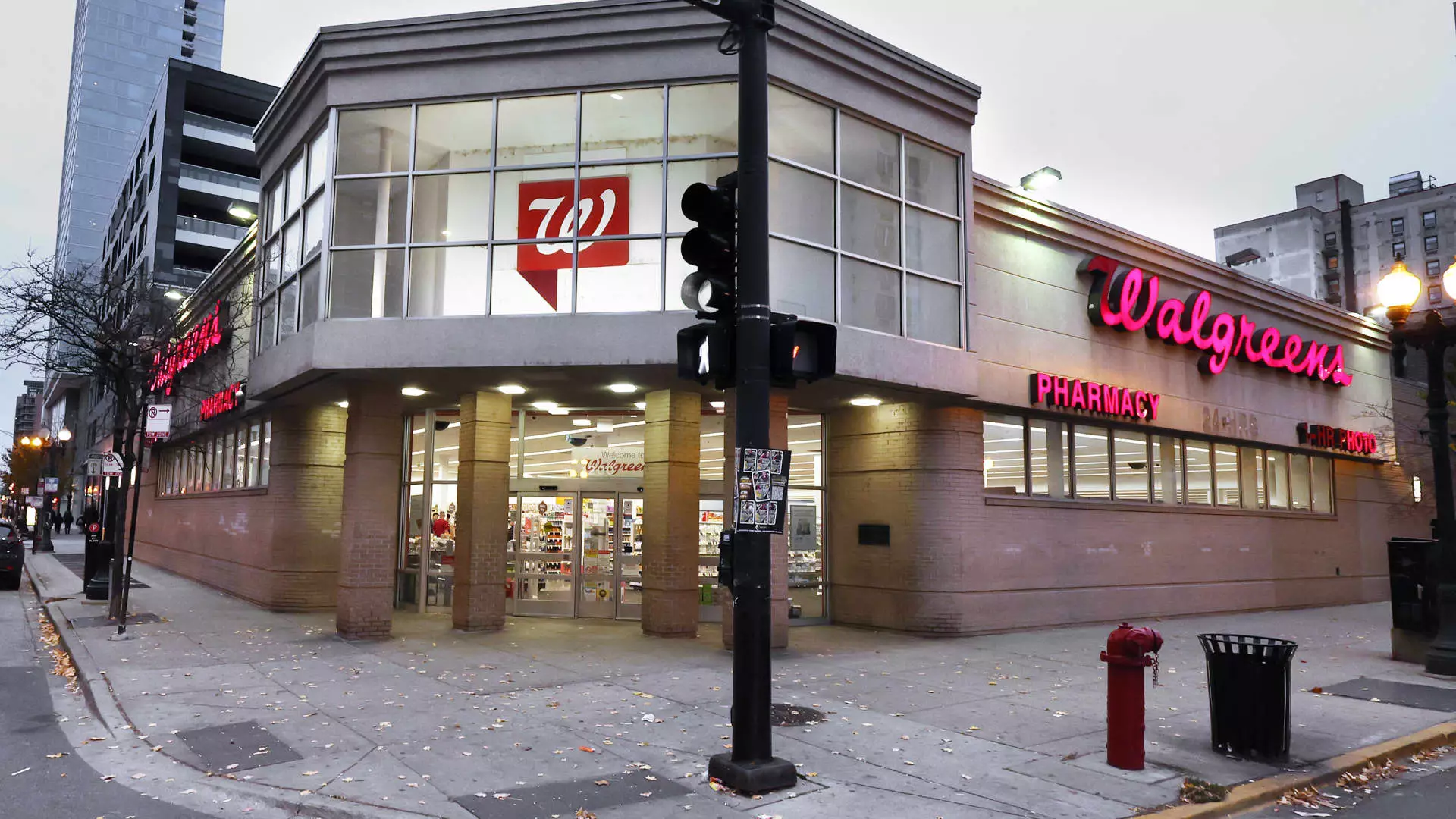In an era where many retail giants are struggling to adapt to a rapidly changing market, Walgreens recently reported earnings for the second fiscal quarter that surprised many observers. With total revenue reaching $38.59 billion—exceeding Wall Street’s expectations—this drugstore titan seems to be navigating stormy waters with a degree of resilience. However, beneath the surface of somewhat positive financial metrics lies a landscape rife with challenges that point to deeper systemic issues. For an organization that has proudly stood since 1927, the current transition to private ownership signifies more than just a strategic pivot. It reflects a culmination of mounting pressures from competition, changes in consumer behavior, and ongoing legal dilemmas that threaten to undermine its legacy.
Desperate Times Call for Drastic Measures
The announcement of Walgreens’ impending privatization by Sycamore Partners for $10 billion raises significant questions about the future landscape of retail pharmacy. This move follows a dramatic shift in corporate strategy, as Walgreens now faces countless challenges in trying to align its operations with the continuously evolving healthcare market. The company’s decision to shutter numerous stores and implement austerity measures is not just a reaction to current difficulties but also an indication of its failure to innovate and adapt to consumer expectations and preferences effectively. The reality is sobering: Walgreens is grappling with a substantial net loss of $2.85 billion for the quarter, yet the leadership seems overly focused on short-term results rather than fostering a sustainable long-term vision.
Cost Management Over Innovation
Walgreens CEO Tim Wentworth touted a strong commitment to cost management as a driving force behind the company’s revenue uptick. However, this disciplined approach raises a critical question: Are cost cuts the solution, or are they merely a band-aid over a deeper wound? The company’s operations in the healthcare sector remain troubled, revealing potential weaknesses in its business model. Merely slashing expenses without pursuing meaningful innovation or investment into new technologies is akin to rearranging deck chairs on the Titanic. Each penny saved today could enshroud a detrimental lack of forward-thinking later when competitor CVS and even emerging players like Amazon continue to disrupt the market landscape.
Legal Woes and Financial Entanglements
On top of operational challenges, Walgreens is navigating perilous legal waters, including a staggering $969 million in settlements related to opioid litigation. These liabilities have contributed to negative cash flow, intensifying scrutiny over the company’s financial health and ethical standing. Coupled with disputes with healthcare partners such as Everly Health Solutions, it is difficult not to view Walgreens as a titan struggling not only with external competition but also with internal instability. The staggering charges related to investments such as VillageMD reveal broader issues within its growth strategy—if Walgreens’ investment ventures falter, the implications for its future will be substantial.
A Pivot, But To What End?
While the company has found some fiscal salvation through strategic investments in pharmaceutical solutions and healthcare services, these endeavors raise the bar on expectations. One cannot ignore the stark juxtaposition between Walgreens’ reported $1 billion profit from these investments against its overall crippling losses. What is equally concerning is the troubling lack of clarity on how Walgreens intends to share these gains with its customers and stakeholders. It begs the question: Is the push towards a diversified healthcare persona merely lip service in the face of relentless market pressure?
The impending shift to private ownership marks an end to Walgreens’ tumultuous chapter as a public company but does not absolve it of the responsibilities that lay ahead. Moving forward, the company must engage in a fundamental reevaluation of not only its healthcare pursuits but also its commitment to innovation. As is the case with many retail behemoths, survival will hinge not on cutting corners but rather on a robust strategy that prioritizes agility in response to a fast-evolving marketplace. Retail pharmacy is at a critical juncture, and Walgreens’ choices in the coming quarters could either herald its renaissance or its irrevocable decline. The pressure is mounting, and how Walgreens responds could set the tone for the future of the entire retail healthcare sector.

